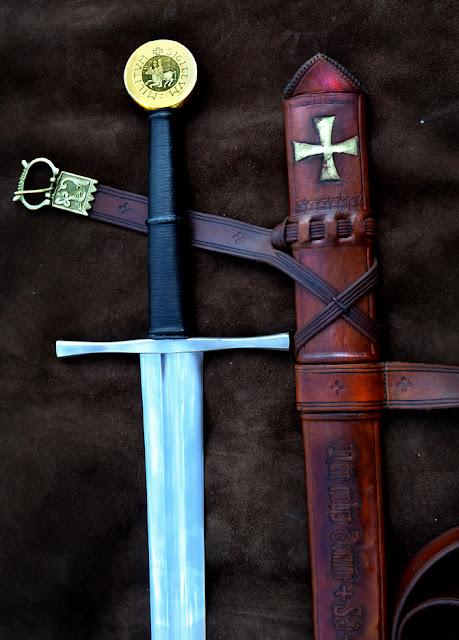The Prophet's Ladder
Wootz steel, a legendary material originating in India, was
renowned for its exceptional combination of hardness and flexibility, famously
used in the exquisite Damascus swords. Its distinctive wavy surface pattern,
the "watered silk" effect, wasn't just cosmetic; it reflected a
unique microstructure imbued with carbon nanotubes and fine carbide particles.
For centuries, the precise methods of its production remained a closely guarded
secret, eventually fading into obscurity.
However, wootz steel didn't stay lost forever. Modern
materials science, with its advanced analytical techniques, has played a
crucial role in its "return" from the past. Researchers have
painstakingly analyzed antique wootz blades, uncovering the secrets of their
composition and microstructure. Through meticulous experimentation, scientists
and modern blacksmiths have been working to reverse-engineer the ancient
processes, attempting to recreate this remarkable steel.
This resurgence of interest is driven by more than just
historical curiosity. The unique properties of wootz steel, stemming from its
nanoscale structure, offer valuable insights for developing advanced materials
today. The lessons learned from this ancient technology are inspiring
innovation in fields ranging from high-performance alloys to nanotechnology.
So, while the exact methods of the original wootz artisans
may still hold some mysteries, the steel itself has been brought back into the
light, not just as a relic of the past, but as a source of inspiration for the
future of materials science.
When we talk about the legendary Damascus blades made with
wootz steel, one of the most coveted and visually striking patterns is known as
the "Mahommed's Ladder."
Evoking the Prophet Mohammed's miraculous ascent through the
heavens via the Ladder, encountering prophets and traversing paradise, this
wootz Damascus pattern carries deep spiritual weight. Representing the bridge
between the earthly and spiritual, and the journey towards divine proximity,
the Ladder of Mohammed design is considered by many to be the most desirable
and likely the rarest of the early Indo-Persian crucible wootz Damascus steel
blade patterns, treasured for its spiritual significance as much as its
captivating beauty.
This design isn't just a superficial decoration; it's a
reflection of the intricate microstructure of the steel and the mastery of the
smith who forged the blade.
Imagine a metallic surface where the light and dark bands of
the wootz's wavy pattern intertwine in a very particular way. In the Mahommed's
Ladder pattern, these undulations don't run more or less parallel along the
length of the blade, but rather are organized into a series of well-defined
arcs or "steps" that ascend along the center of the blade. This
arrangement creates an appearance that evokes, with a bit of imagination, the
rungs of an ascending ladder, hence its poetic name.
The beauty of this pattern lies in its complexity and the
illusion of depth it generates. Each "step" is composed of the fine
bands of the watered silk pattern characteristic of wootz, which adds layers of
visual detail. The way light interacts with these undulations creates a
shifting and mesmerizing sheen, almost hypnotic.
But the Mahommed's Ladder wasn't just about aesthetics. Its
presence indicated a high level of skill on the part of the smith. Achieving
this specific pattern during forging required very precise techniques of
folding and twisting the steel. The smith had to have a deep understanding of
how the material responded to heat and the hammer blows to manipulate the
impurities and the steel's structure in a controlled manner.
It is believed that this pattern, like other Damascus
patterns, could slightly influence the mechanical properties of the blade,
helping to distribute stresses more evenly along its length. However, the main
reason for its prestige was undoubtedly its exceptional beauty and the
testament to the craftsman's skill.
In summary, the Damascus blade with the Mahommed's Ladder
pattern made from wootz steel was a functional work of art. It combined the
legendary strength and flexibility of wootz with a visually stunning design
that spoke to the technical and artistic mastery of those who created them.
Owning one of these blades was a symbol of wealth, power, and an appreciation
for craftsmanship of the highest quality.
We have successfully reproduced the Ladder of Mohammed
pattern in wootz steel, and we wanted to share it here.







Comentarios
Publicar un comentario